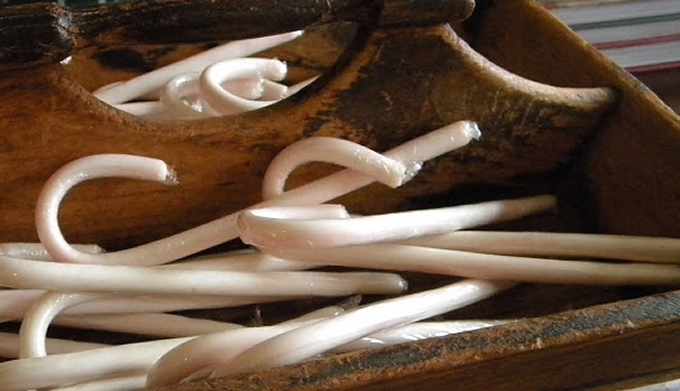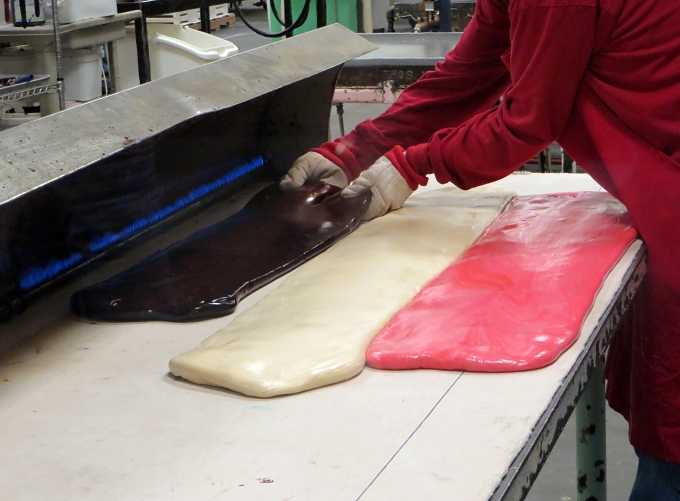Making Candy Canes
/When we were in Colorado a couple of weeks ago, we stopped into the Hammond Candy Factory for a free tour. We got what we paid for. Sometimes “free” doesn't amount to much. The tour was rather boring … the guide was bored with her job and the extent of the “tour” included viewing a rather dated video and then peering through a hazy window (hence hazy photos) to watch candy factory people chat and be bored while making candy.
We did, however, see candy canes being made. Hammonds still does things the “old fashioned” way … that is, mostly with very old machines and several facets of the process by hand. They pride themselves in this aspect of their business, though we're thinking they could lower their prices and produce more candy a bit faster if they introduced a bit more efficiency to their factory … and they probably wouldn't sacrifice anything in the quality department. Just an observation on our part though.
Though no mention was made of it on the tour, Wiki informed me that “the first historical reference to the familiar cane shape goes back to 1670, when the choirmaster at the Cologne Cathedral in Germany, bent sugar-sticks into canes to represent a shepherd's staff. The all-white candy canes were given out to children (to keep them quiet?) during the long-winded nativity services.” Evidently, the all-white candy candy canes became a tradition, but stayed white until the turn of the 20th century when Christmas card illustrations began showing striped canes. It was around that same time that minty flavors were added to the candy.
Back to the subject at hand … Candy cane making is quite an art. We watched as two men emptied giant copper cauldrons of thick bubbling sugar syrup onto large cooling tables. After cooling, this sticky concoction was gathered up into a large blob and put onto an antiquated machine to be “pulled”. Color was added here. Then candymakers worked two or three gigantic blobs by hand, carefully laying one color next to another, forming it into rectangles … this would forms the stripes. Flavoring was added at this point and worked into the mix.
The tri-colored rectangle was fed into a machine which turned out a long, twisted, striped tube of candy. One fellow measured and, using a large pair of scissors, cut the stick to exactly the right length. The next person in line bent the end to form the “crook” of the cane. That's the part I appreciated the most although she didn't look very excited about the task. Probably candy cane bending for eight hours a day does that to you. At the next station, they were packaged.
Hammonds offers 30 candy cane flavors. Peppermint is just the beginning. There's pumpkin pie, birthday cake and Five Spice among others. We're traditionalists … peppermint for us … thank you very much. Wish we had a smell or taste byte to share with you. Before the tour leader dumped us out in the factory store, she gave each of us a sample. A nice gesture especially since we couldn't find anything in the store that we could afford.
We'd never heard of Hammonds before though they've been in Denver since 1920. I wondered how they stayed in business if no one's ever heard of them. When I went into Barnes & Noble the other day here in Walpole, however, there they were … several Hammond's Candy displays. I guess we've been living in a box … or on a boat.
Care to try making your own? Give this recipe a try.








